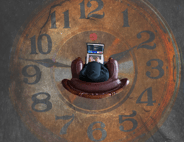Imagine you’ve just spent the last 18 months preparing for a big meeting with a new prospect. Ever since your team was selected as a finalist, everyone’s energy has been focused on the big presentation and now:
- The agenda is finished.
- The last slide in the PowerPoint deck is complete.
- The binders and inserts have been collated.
- Everyone on your team knows their roles.
- The client’s team knows their roles.
Finally, like two football teams filing out of the locker room on Super Bowl Sunday, game time is here. Everyone on your team hits their cue, there aren’t any curve balls. All in all, it came off as well as could have been expected. . After exchanging pleasantries, your team walks back toward the exit as if they were headed back into the locker room.
This sequence of events is the reality for most sellers presenting to a client. But if you’ve been at this long enough, you know that the best gems often come when the projector has been turned off and the laptops are stowed in their cases.
The Sidebar
In a courtroom, a sidebar is when both attorneys approach the bench and exchange information outside of the jury’s earshot.
In business, it’s those conversations in the corner of the room or down the hall, in less formal, more intimate circles. It’s when, in a more intimate moment, the client shares a comment, concern, praise, or question, that wasn’t said in the group setting. And often, when the most important information surfaces. This is when you might here phrases like,
- “We were actually looking for a way to do that…”
- “We don’t have any budget for that this year, but I could see us putting that in the budget next year.”
- “That one part of your presentation was interesting because…”
- “If we could figure out a way to do X…”
The best-in-class sellers are listening to the verbal (and non-verbal) communication and can pick up on signals from their clients throughout the meeting. They listen with a spirit of curiosity. They listen to connect, not so they can pounce on a perceived opportunity like a hawk. That listening doesn’t stop when they’re finished presenting.
That walk down the hall toward the exit that normally takes 60 seconds, lasts another 20 minutes because someone actually asked a question that demonstrated they were listening. Or they simply listened in a way that created a side bar.
Mark Slatin is a VP of Sales at entreQuest who is outsourced to a wide variety of companies to coach their teams, improve their client experiences, and raise their revenues.







